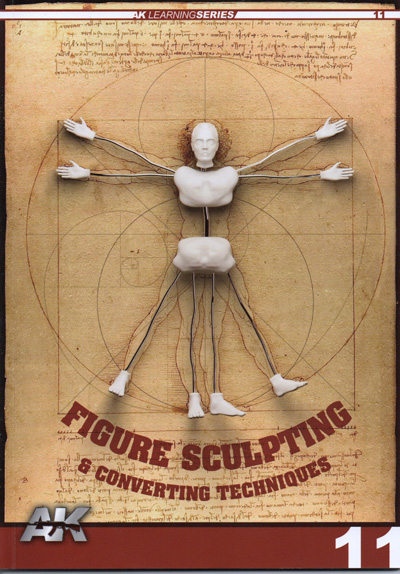
Edited: Fernando Vallejo
Published: A K Interactive
ISBN: 8 435568 308229
Bookshelf Browse with Bill Curtis
Soft cover, 88 pages English and Spanish text
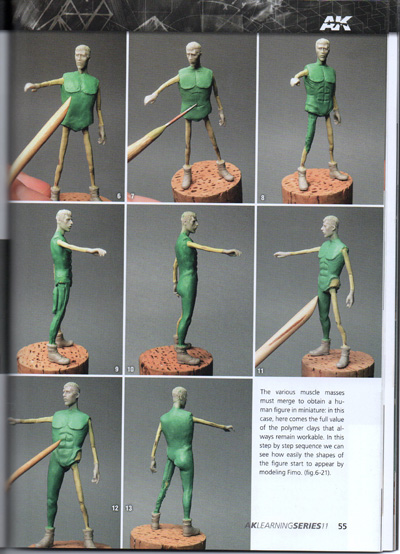 This is another volume in the AK learning series collection and is laid out in a logical sequence from materials through various examples of techniques of differing degrees of difficulties, with easy to follow text leading one through the various steps which gives the reader understanding of the principles for later application on the models.
This is another volume in the AK learning series collection and is laid out in a logical sequence from materials through various examples of techniques of differing degrees of difficulties, with easy to follow text leading one through the various steps which gives the reader understanding of the principles for later application on the models.
The book is divided into 6 sections as follows:-
1. Introduction
2. Materials and useful tools
3. Method to transform a figure
4. Method to sculpt a figure
5. Sculpture
6. Gallery
Materials and tools chapter gives a comprehensive outline of epoxy putties and usage, polymer clays, tools for handling putty, copper wire for pinning and making armatures, measuring tools, sanding tool and glues.
Chapter three deals with using commercial figures and adjusting the pose with simple alterations such as the changing of heads and arm, hand or leg positions by cutting and repositioning and filling in any gaps with putty which can then be engraved to simulate creases. After the face the most important item on the figure is the hands and diagrams and text show how to alter them to actually hold an item properly. These are easy ways to get a figure to tell the modellers story with simple changes which should be within the novice modellers grasp. This chapter is sub divided into three sections starting with the simple conversion through more advanced conversions and finally complex transformation which changes the figure radically to achieve a different outcome entirely.
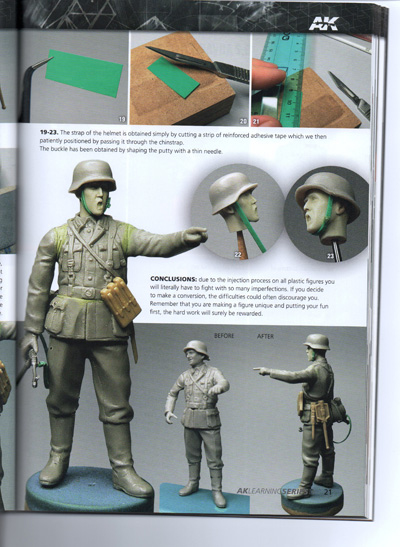
The fourth part is devoted to method of sculpting which starts by taking the figure back to its simplest forms and using cut sprue, or precast pieces for the chest and pelvic area, wire is used to join all parts forming the basic figure which can be bent to shape before filling out with putty. It is important to keep in mind the anatomy of the figure and to keep everything in proportion, hence the measuring tools. The last portion of this chapter deal with folds in cloth giving advice on how it hangs and creases with limbs bent.
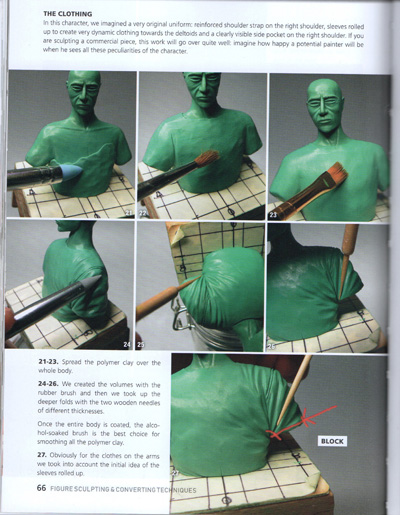
Sculpture is the next chapter which starts with a simple figure from scratch, this is then followed by a complete complex figure and is very well illustrated showing each stage of the process. Next come the sculpting of a bust and follows the layout of the previous figure process again with copious photographs of the sculpting process.
The last chapter of this volume is a gallery of models by some well-known and not so well known to me, but all incredibly well done and should act as an inspiration to anyone wishing to try their hand at sculpting.
This series of books is a really valuable resource for the modeller and the Figure Sculpting & Converting Techniques book is no exception as within its 83 pages of A5 size is a wealth of information with clear text, good quality photographs, printed on quality paper for a very reasonable price.
Highly recommended
Bill C.
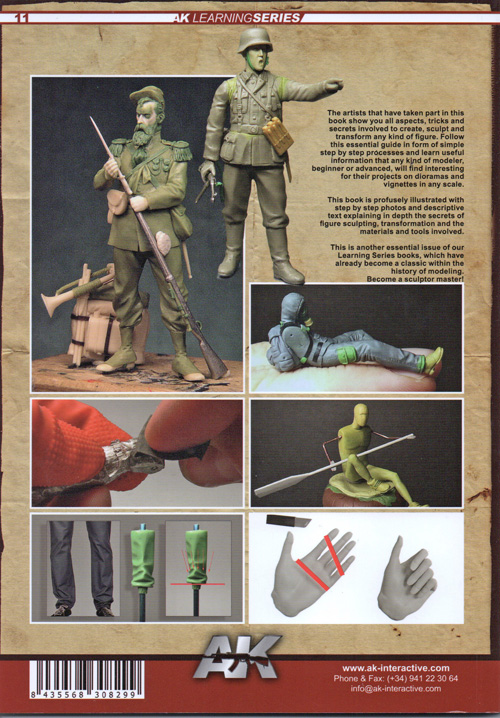
Ask a question or add feedback:
You must be logged in to post a comment.